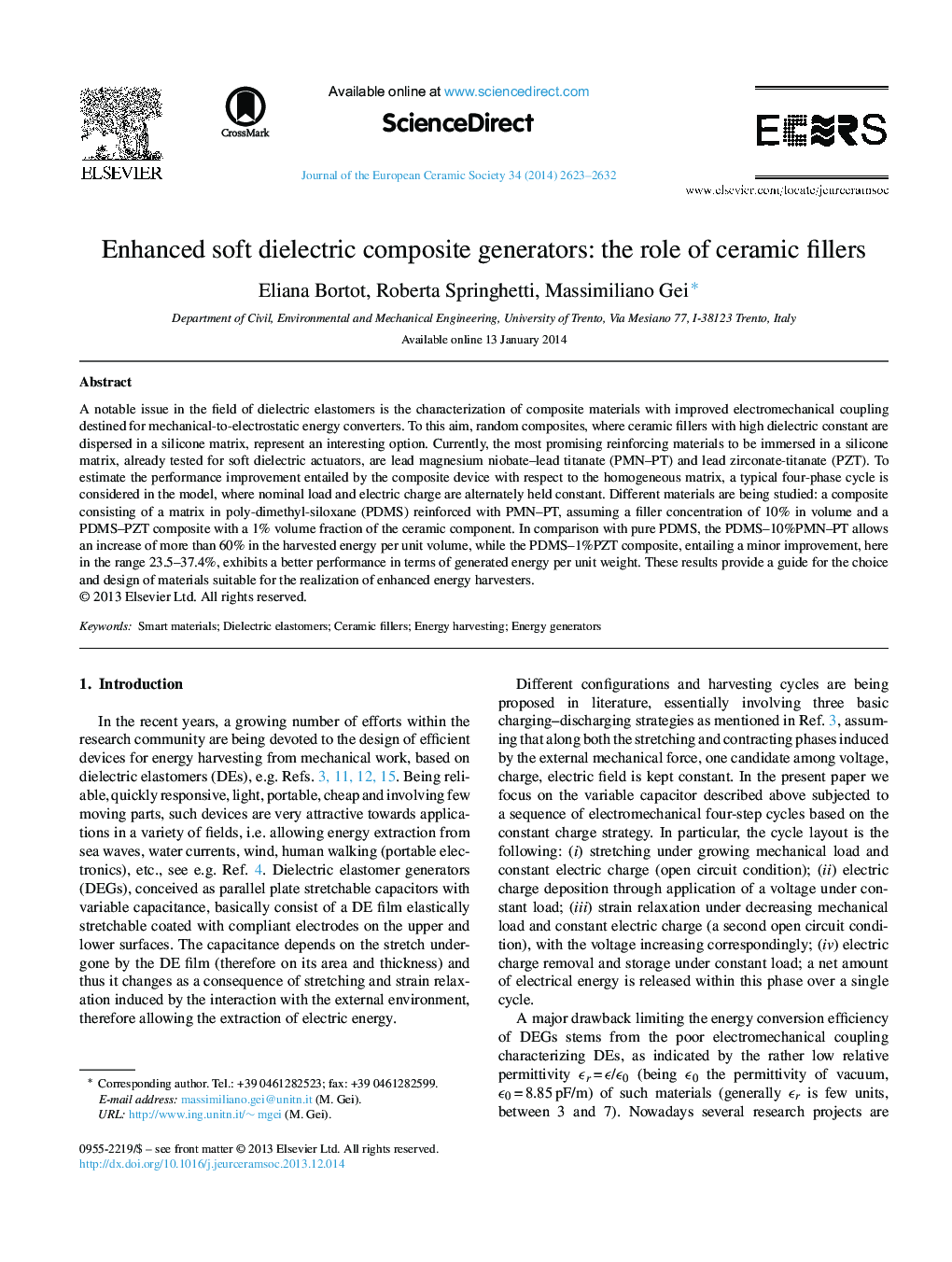| Article ID | Journal | Published Year | Pages | File Type |
|---|---|---|---|---|
| 1473932 | Journal of the European Ceramic Society | 2014 | 10 Pages |
A notable issue in the field of dielectric elastomers is the characterization of composite materials with improved electromechanical coupling destined for mechanical-to-electrostatic energy converters. To this aim, random composites, where ceramic fillers with high dielectric constant are dispersed in a silicone matrix, represent an interesting option. Currently, the most promising reinforcing materials to be immersed in a silicone matrix, already tested for soft dielectric actuators, are lead magnesium niobate–lead titanate (PMN–PT) and lead zirconate-titanate (PZT). To estimate the performance improvement entailed by the composite device with respect to the homogeneous matrix, a typical four-phase cycle is considered in the model, where nominal load and electric charge are alternately held constant. Different materials are being studied: a composite consisting of a matrix in poly-dimethyl-siloxane (PDMS) reinforced with PMN–PT, assuming a filler concentration of 10% in volume and a PDMS–PZT composite with a 1% volume fraction of the ceramic component. In comparison with pure PDMS, the PDMS–10%PMN–PT allows an increase of more than 60% in the harvested energy per unit volume, while the PDMS–1%PZT composite, entailing a minor improvement, here in the range 23.5–37.4%, exhibits a better performance in terms of generated energy per unit weight. These results provide a guide for the choice and design of materials suitable for the realization of enhanced energy harvesters.
